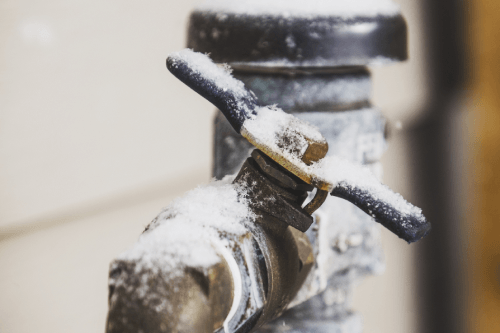Avoiding Frozen Pipes: Best Tips for Winter
Avoiding Frozen Pipes: Best Tips for Winter
Blog Article
What are your thoughts on Helpful Tips to Prevent Frozen Pipes this Winter?

Cold weather can ruin your pipes, particularly by freezing pipelines. Here's how to avoid it from happening and what to do if it does.
Introduction
As temperatures decrease, the risk of frozen pipelines rises, potentially resulting in costly fixings and water damages. Comprehending how to stop icy pipes is crucial for home owners in cool climates.
Comprehending Frozen Pipes
What causes pipes to freeze?
Pipelines ice up when subjected to temperatures listed below 32 ° F (0 ° C) for prolonged periods. As water inside the pipelines freezes, it expands, putting pressure on the pipeline walls and potentially causing them to break.
Threats and problems
Frozen pipelines can lead to water system disruptions, residential property damages, and expensive repairs. Ruptured pipes can flooding homes and trigger considerable architectural damages.
Indications of Frozen Water Lines
Identifying icy pipes early can prevent them from rupturing.
How to identify icy pipelines
Try to find lowered water circulation from taps, uncommon odors or sounds from pipes, and noticeable frost on revealed pipelines.
Prevention Tips
Protecting susceptible pipelines
Cover pipes in insulation sleeves or use heat tape to protect them from freezing temperature levels. Focus on pipes in unheated or outside areas of the home.
Heating strategies
Maintain interior spaces appropriately warmed, particularly areas with pipes. Open up cupboard doors to allow cozy air to distribute around pipes under sinks.
Shielding Outdoor Pipes
Garden hoses and outside taps
Separate and drain pipes garden hoses before winter months. Set up frost-proof faucets or cover outdoor taps with shielded caps.
What to Do If Your Pipelines Freeze
Immediate actions to take
If you presume icy pipelines, maintain taps open up to eliminate stress as the ice melts. Use a hairdryer or towels soaked in hot water to thaw pipelines slowly.
Long-Term Solutions
Architectural modifications
Take into consideration rerouting pipelines away from outside walls or unheated locations. Add extra insulation to attic rooms, basements, and crawl spaces.
Upgrading insulation
Buy premium insulation for pipelines, attics, and wall surfaces. Proper insulation helps maintain constant temperatures and reduces the risk of frozen pipes.
Verdict
Preventing frozen pipelines calls for aggressive actions and fast actions. By recognizing the causes, signs, and safety nets, house owners can protect their pipes throughout cold weather.
5 Ways to Prevent Frozen Pipes
Drain Outdoor Faucets and Disconnect Hoses
First, close the shut-off valve that controls the flow of water in the pipe to your outdoor faucet. Then, head outside to disconnect and drain your hose and open the outdoor faucet to allow the water to completely drain out of the line. Turn off the faucet when done. Finally, head back to the shut-off valve and drain the remaining water inside the pipe into a bucket or container. Additionally, if you have a home irrigation system, you should consider hiring an expert to clear the system of water each year.
Insulate Pipes
One of the best and most cost-effective methods for preventing frozen water pipes is to wrap your pipes with insulation. This is especially important for areas in your home that aren’t exposed to heat, such as an attic. We suggest using foam sleeves, which can typically be found at your local hardware store.
Keep Heat Running at 65
Your pipes are located inside your walls, and the temperature there is much colder than the rest of the house. To prevent your pipes from freezing, The Insurance Information Institute suggests that you keep your home heated to at least 65 degrees, even when traveling. You may want to invest in smart devices that can keep an eye on the temperature in your home while you’re away.
Leave Water Dripping
Moving water — even a small trickle — can prevent ice from forming inside your pipes. When freezing temps are imminent, start a drip of water from all faucets that serve exposed pipes. Leaving a few faucets running will also help relieve pressure inside the pipes and help prevent a rupture if the water inside freezes.
Open Cupboard Doors
Warm your kitchen and bathroom pipes by opening cupboards and vanities. You should also leave your interior doors ajar to help warm air circulate evenly throughout your home.

I was shown that editorial on Preventing and dealing with frozen pipes from an acquaintance on another web property. Don't hesitate to take a moment to promote this content if you appreciated it. I truly appreciate reading our article about How To Avoid Freezing Pipes.
Top Article Report this page